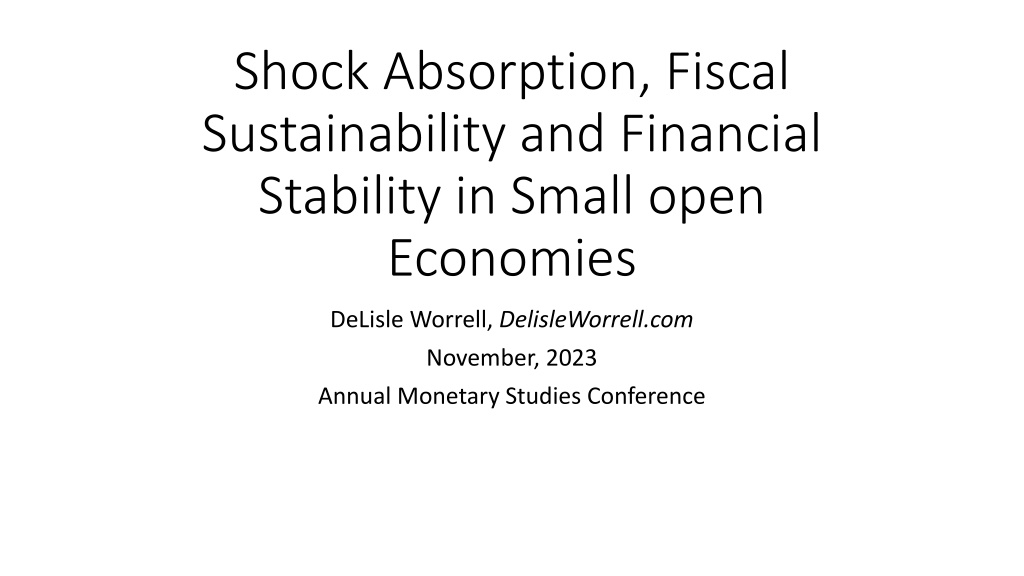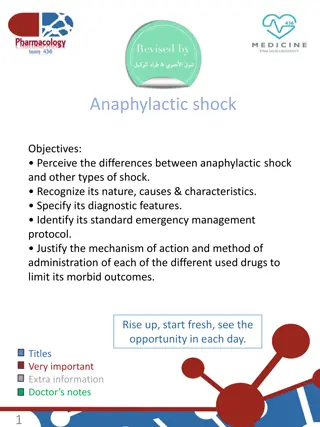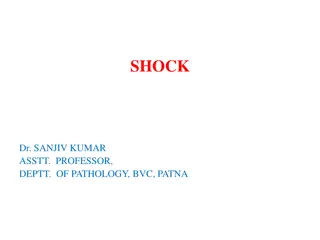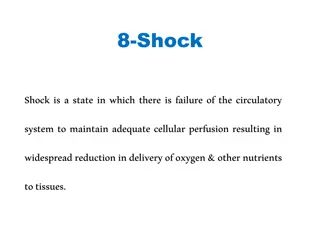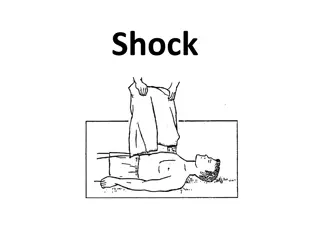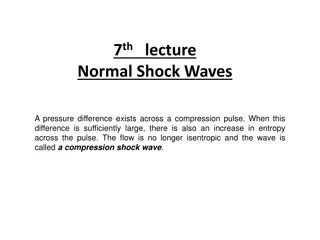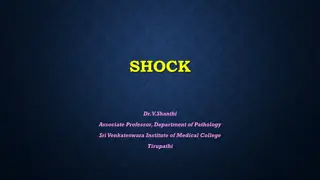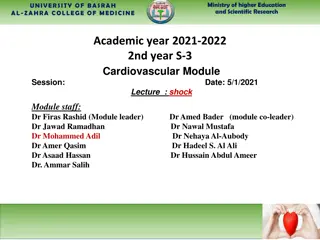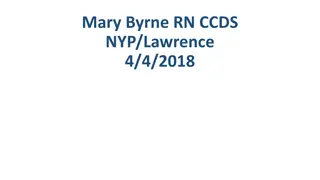Understanding Shock Absorption and Fiscal Sustainability in Small Open Economies
This presentation delves into a model of output, prices, public finance, and balance of payments in small open economies. It explores the impact of macroeconomic shocks, fiscal sustainability restoration, and financial stability maintenance. The model sheds light on policy responses to varying economic challenges and emphasizes the importance of competitiveness, exchange rates, and government expenditure policies.
Download Presentation

Please find below an Image/Link to download the presentation.
The content on the website is provided AS IS for your information and personal use only. It may not be sold, licensed, or shared on other websites without obtaining consent from the author. Download presentation by click this link. If you encounter any issues during the download, it is possible that the publisher has removed the file from their server.
E N D
Presentation Transcript
Shock Absorption, Fiscal Sustainability and Financial Stability in Small open Economies DeLisle Worrell, DelisleWorrell.com November, 2023 Annual Monetary Studies Conference
Abstract This presentation offers a model of output, prices, public finance and the balance of payments of a small open economy. Output growth depends on the competitiveness of exports of goods and services; domestic prices deviate from international prices to an extent that varies with changes in the exchange rate; and government s expenditure and financing policies have critical implications for exchange rate stability. This model may be used to provide guidance on policy responses to a variety of macroeconomic challenges. In this presentation the model is used to analyse responses to macroeconomic shocks, the restoration and maintenance of fiscal sustainability, and the assessment and maintenance of financial stability.
A model of the small open economy
What is a small economy? There is a continuum from economies that are more like nations to economies that are more like households: Nations and large economies produce the full variety of goods and services they consume, and domestic consumption accounts for a significant % of domestic production; Households and very small economies supply only one or a handful of goods and (labour) services, using their wages to buy almost everything they consume. The further to the right an economy lies on this continuum, the more it is like the household. The analogy for SOEs is the household.
The size and growth of the SOE are determined by foreign currency inflows Foreign earnings from competitive exports and services + foreign finance add directly to national income; These inflows also stimulate nontradable production; National income (=exports + nontradables) creates demand for imports; Any surplus that remains from inflows is invested abroad, to be called upon in case of future BoP deficits.
Economic growth The SOE sells all the exportable goods and services it produces at the world price for every quality it offers. The economy grows by attracting investment to increase capacity to produce exportable goods and services. Investment is attracted by the country s international competitiveness, i.e perception by potential investors that they can produce profitably given all domestic circumstances.
Competitiveness - 1 The most competitive countries are those which can increase market share even though their prices are rising compared to their competitors (B1). That is evidence that they are providing better value for money, the true measure of competitive success. B1 A1 A2 B2
Competitiveness 2: The Global Competitiveness Index A qualitative index, comprising Environmental factors: Institutions, infrastructure, ICT adoption, macroeconomic stability; Human capital: health, skills; Market efficiencies: products, labour, financial; Innovation ecosystem: capability, business dynamism.
Anchoring the exchange rate 1: monetary and external balance MM and BB are the monetary and BoP tradeoffs in the FXR/ER space in the conventional macro model. Increases in FXR increase the money supply (MM), but ER appreciation worsens the BoP (BB). However, in the SOE, almost all the increase of reserves is invested abroad (automatic full sterilization), so there is no increase in domestic money circulation (M M ), and exchange rate changes have no effect on the BoP because to coefficient of substitution is close to zero. There is no determinate equilibrium exchange rate. The SOE should anchor the exchange rate wherever it happens to be.
Anchoring the exchange rate 2: restoring the balance of foreign currency demand and supply The foreign currency market in the SOE should be treated as a fixed- price market, in which the best policy for stabilization is to manage aggregate demand with a view to avoid shortages in the FC market. This line is the propensity to import, showing the amount by which aggregate expenditure must be cut (- a) to reduce imports demand (- m) by enough to balance the FC market.
Anchoring the exchange rate 3: the effect of money creation on aggregate demand This chart shows the amount by which money supply must be cut (- b) to reduce aggregate demand and import needs to the level that the foreign currency supply can accommodate. The only effective way to reduce money supply is via a cut in central bank net lending to government, implying a contraction in the fiscal balance.
A model of the SOE - growth 6.1. i = f1(-xcapt(-1), a*, pt, ulc, rf, emp, GCI), where i: investment; -xcapt(-1): full capacity; a*: aggregate expenditure, expected; pt: price of imported inputs; ulc: unit labour costs; rf: the opportunity cost of investment; emp: exchange market pressure variable, ; GCI : indicator of (non-price) competition. The SOE grows with investment in new productive capacity and to increase productivity and quality. The factors that attract investment are: Whether exportable production is at full capacity; For nontradables, anticipated domestic demand; Input prices (all imported); Unit labour costs; World interest rates; The stability of the exchange rate; Qualitative factors.
A model of the SOE production of exportables 6.2. qt= f2(pt, ulc, r) qt: the output of tradable goods and services; r: the domestic interest rate, the cost of working capital. The SOE exports all the goods and services it can supply profitably at the going international price. The amount produced is determined on the supply side, by the costs of production: imported input cost, cost of working capital and unit labour costs.
A model of the SOE - nontradables Nontradable producers have an expectation of the demand for their output, based on last year s production and the economic outlook. They offer this production at prices they judge will sell all they plan to produce. However, if FC inflows fail to live up to expectations and the economy underperforms, output will not live up to expectations. The intended production and offer price of nontradables 6.3. qn= f3(a*, qn(-1)) where qn: output of non tradables. The realized output and price of nontradables 6.4. pn= f4(qn, pt, ulc, r) where pn: the price of nontradables.
A model of the SOE imports and the BoP Because the coefficient of substitution in consumption is zero, imports are a function of aggregate expenditure only. The import equation 6.5. m = f5(a) The BoP identity FXR = pt(x - m) + FDI + Bf, where : change in the variable; FXR: foreign exchange reserves; x: exports of goods and tourist and other services sold abroad; FDI: foreign direct investment; Bf: foreign borrowing by the public sector.
A model of the SOE- the public sector Government revenue depends on the combination of national income and the rates of taxation. Government expenditures are exogenous. Government revenue: 6.6. Rev = f6(Y, txi) where Y: nominal national income; txi: tax rates, i = 1, 2, 3, ... The fiscal balance, FISC, is: FISC = Rev - Gc- Gk, where Gc, Gk: government current and capital expenditure.
A model of the SOE government finance and money creation MB = - (FISC - Bf- Bd), where MB: base money; Bd: new issues of domestic debt, net of redemptions. Additions to the monetary base are the result of the excess of the public sector deficit over what the private sector (local and foreign) is willing to finance at the prevailing interest rate.
Adjusting to macroeconomic shocks
An oil price shock Loss of FXRs will increase risk of capital flight, and import price increases will spur inflation. Policy options: Do nothing, hope inflation reduces spending and imports; Offer subsidies to alleviate inflation; Cut discretionary gov t expenditure. Disaggregate imports in the current account (CA) of the BoP into non- petroleum (np) and petroleum (mp): FXR = pt(x - m) + FDI + Bf CA = pxx pnpmnp- ppmp
Consider the options Do nothing: if the higher oil price persists, domestic spending becomes less affordable, real imports fall, and eventually a combination of lower FX reserves and lower imports restores balance. If gov t tries to alleviate inflation through subsidies it will, sooner rather than later, have to borrow from the central bank to finance a worsening fiscal position. That will add to apprehension of the FXR loss, and may precipitate a BoP crisis. The prudent response is for gov t to cut discretionary public spending sufficiently to eliminate fears of exchange rate depreciation. This allows policy makers time to assess whether the shock is permanent, and, if so, what lasting strategies should be put in place.
Covid or exogenous loss of foreign earnings A similar logic applies for any exogenous shock affecting foreign earnings. Attempts by gov t to avoid a loss of spending power will fail, because, apart from emergency funds from international organisations (during Covid, for example) gov t has only local currency resources, and the shortage is of FC. With (perhaps) one or two exceptions, natural disasters in the Caribbean have not had lasting impacts on the level of development or the quality of life of the population. In the aftermath of the disaster, capital inflows are typically very high, due to insurance claim payments and disaster relief, from private and official sources.
A sudden major decline in foreign investment i = f1(-xcapt(-1), a*, pt, ulc, rf, emp, GCI) Evidence of declining competitiveness appears over time: unused capacity, declining labour productivity and rising unit labour costs, and health, education, market infrastructures and other non-price considerations included in indices such as the Global Competitiveness index. Loss of competitiveness will be reflected in a slowdown in foreign investment; competitiveness must be restored by sector- specific strategies over the medium and long term. However, if there is a sudden fall-off of foreign investment, that suggests there is capital flight, caused by declining confidence in gov t policies. Measures for fiscal contraction are the appropriate remedy.
Fiscal sustainability in the small open economy Fiscal sustainability may be defined objectively in the small open economy in terms of the impact of government s borrowing on the balance of external payments. A public sector deficit which government is able to finance fully with domestic and foreign borrowing at market rates may be sustained indefinitely. On the other hand, when gov ts that issue their own currency borrow from central banks to finance deficits in excess of what the private sector will buy, the expenditure which results causes a loss of foreign exchange, and precipitates capital flight. Such deficits are not sustainable. More prudent expenditure and financial management will restore sustainability.
Impact of excessive govt borrowing on the BoP MB = - (FISC - Bf- Bd) a = q + MB/p m = f5(a) FXR = pt(x - m) + FDI + Bf, Fiscal deficit that cannot be fully financed by (Bf+ Bd) => money creation => additional aggregate spending => additional demand for imports => FX reserves losses, fear of ER depreciation, capital flight.
Financial stability in the small open economy
Assessing the health of the financial system is a multi-faceted process, involving: Judgmental use of Financial Stability Indicators; Combining FSIs in signaling models to highlight highest risks; Logit, probit and discriminant models of the distance to default of important financial institutions; Stressing financial institution resilience to increasing stresses under different contingencies; Exploring interbank contagion exposures, including via foreign ownership and correspondent links; Exploration of the implications of alternative scenarios.
Preparing forecasts of financial variables based on macroeconomic forecasts of the economy The forecasts provide benchmarks for ongoing assessment of the viability of financial institutions and the system as a whole; They help to identify important linkages, such a balance sheet effects of exchange rate changes, and possible contagion from external links; The forecasts help with the early detection of irregularities, such as the effects of the introduction of new technologies. The monitoring of the financial should be an element of an an integrates framework of economic management and decision making by the Treasury, the central bank, and the top economic and financial officers of government.
Use of macroeconomic forecasts in scenario writing for financial stability analysis Example of a scenario for the ratio of nonperforming to total loans, NPL: NPLt= f( rt-1. Pt, yt, NPLt-1) The benchmark for the evolution of NPL can be derived from the forecasts for inflation Ptand growth ytin the equation. Benchmarking facilitates early detection of risk, by comparing actual outcomes with the benchmark. A more sophisticated forecast is presented in Maechler, Mitra and Worrell, 2009.
Resources Maechler, Andrea and Srobona Mitra and DeLisle Worrell 2009 Decomposing Financial Risks and Vulnerabilities in Emerging Europe, IMF Staff Papers, 24 November. Worrell, DeLisle, 2023, Development and Stabilization in Small Open Economies, London and New York: Routledge, Chapter 6. Worrell, DeLisle, 2008, Stressing to breaking point: Interpreting stress test results, IMF Working Paper, June. Worrell, DeLisle, 2004, Quantitative assessment of the financial sector: an integrated approach, IMF Working Paper, August.
